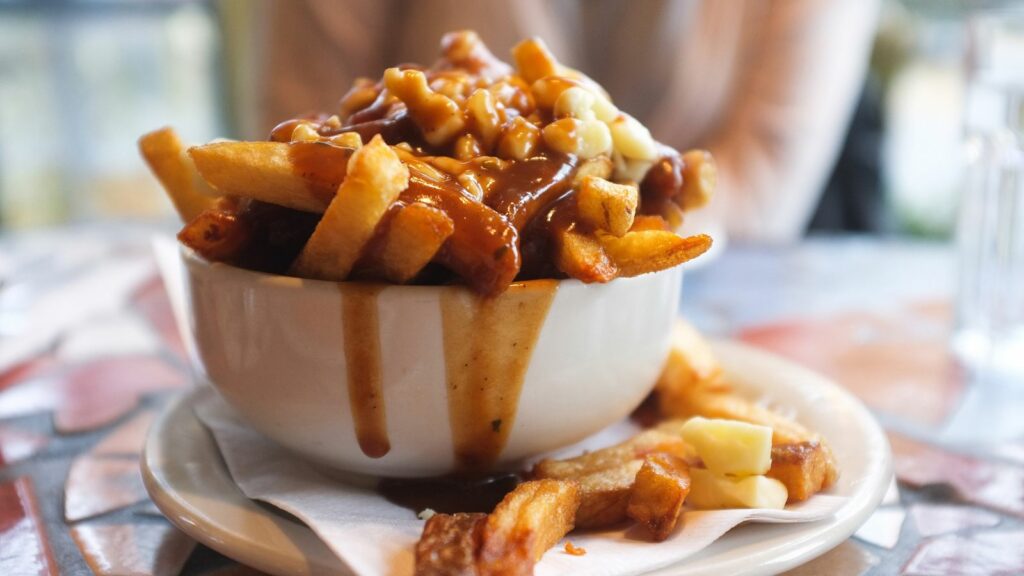Tourists expecting affordable comfort food in Canada often get a surprise when they see the price tags. The country’s vast geography, cold climate, and import costs make some dishes and ingredients unexpectedly pricey. Even everyday staples can cost double what travelers are used to paying elsewhere. From seafood to syrup, eating out or even grocery shopping can test the limits of a vacation budget. Here are 23 Canadian foods that shock tourists with their price.
Poutine
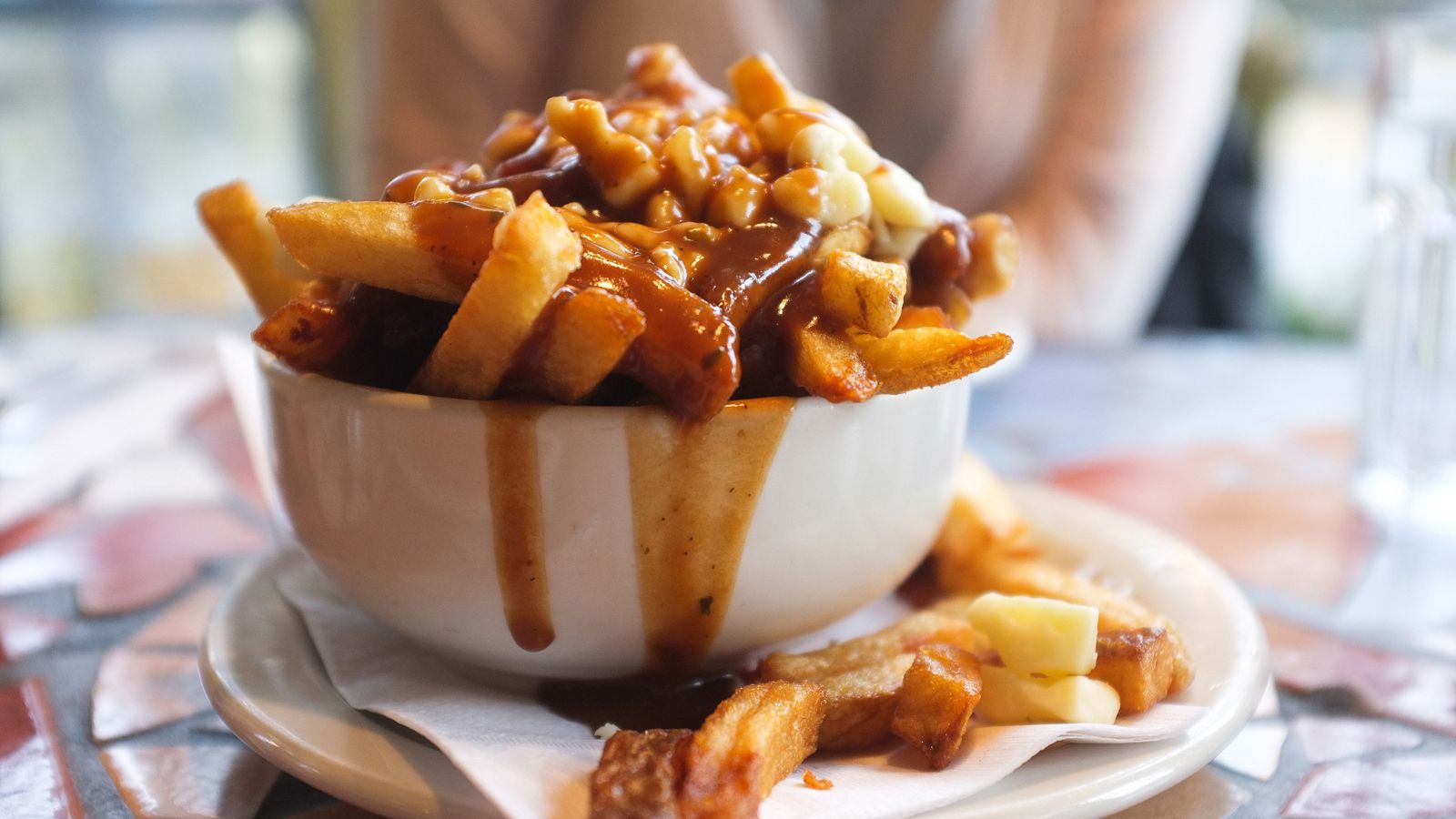
The iconic fries-gravy-cheese curd combination sounds cheap, but it often isn’t. In cities like Toronto or Vancouver, a standard serving runs about $12–$18 at casual restaurants, and “gourmet” versions can cross $25 with add-ons like duck confit or truffle oil. The high price comes from imported cheese curds, rising potato costs, and restaurant markups. Even food truck versions can stretch a tourist’s snack budget. Locals accept the cost for the nostalgia, but visitors often can’t believe they’re paying that much for fries, especially when similar dishes elsewhere cost half as much.
Maple Syrup
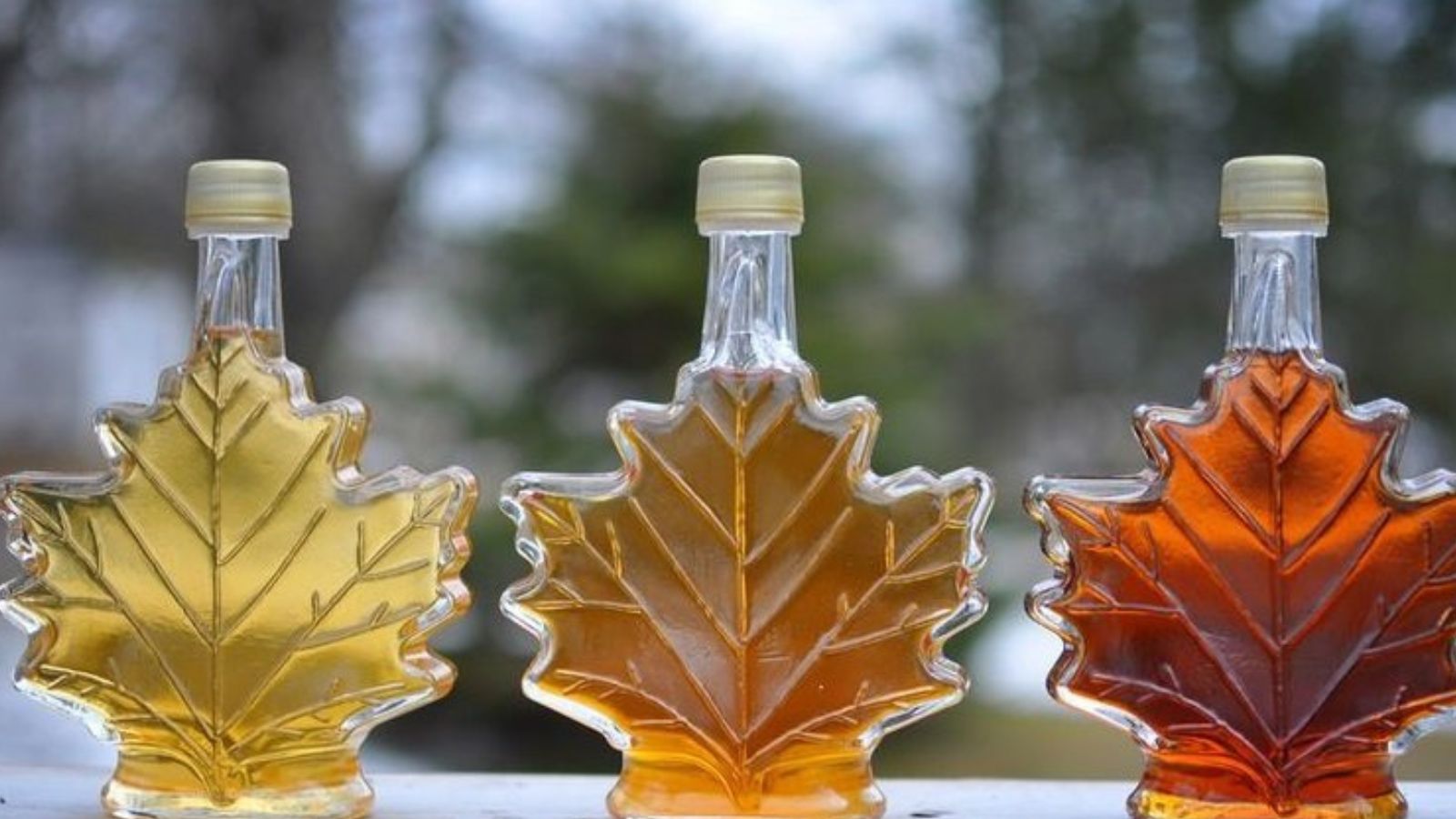
Tourists expect maple syrup to be everywhere and cheap, but real Canadian syrup can be expensive. A 1-liter bottle of pure Quebec maple syrup averages $25–$35, and high-end aged or single-origin bottles can hit $60. That’s because it takes roughly 40 liters of sap to produce one liter of syrup, and the tapping process is labor-intensive. With exports tightly controlled and global demand high, prices stay steep. Many tourists opt for cheaper “pancake syrup,” only to realize later it’s mostly corn syrup, proof that authenticity in Canada always comes with a cost.
Lobster Rolls
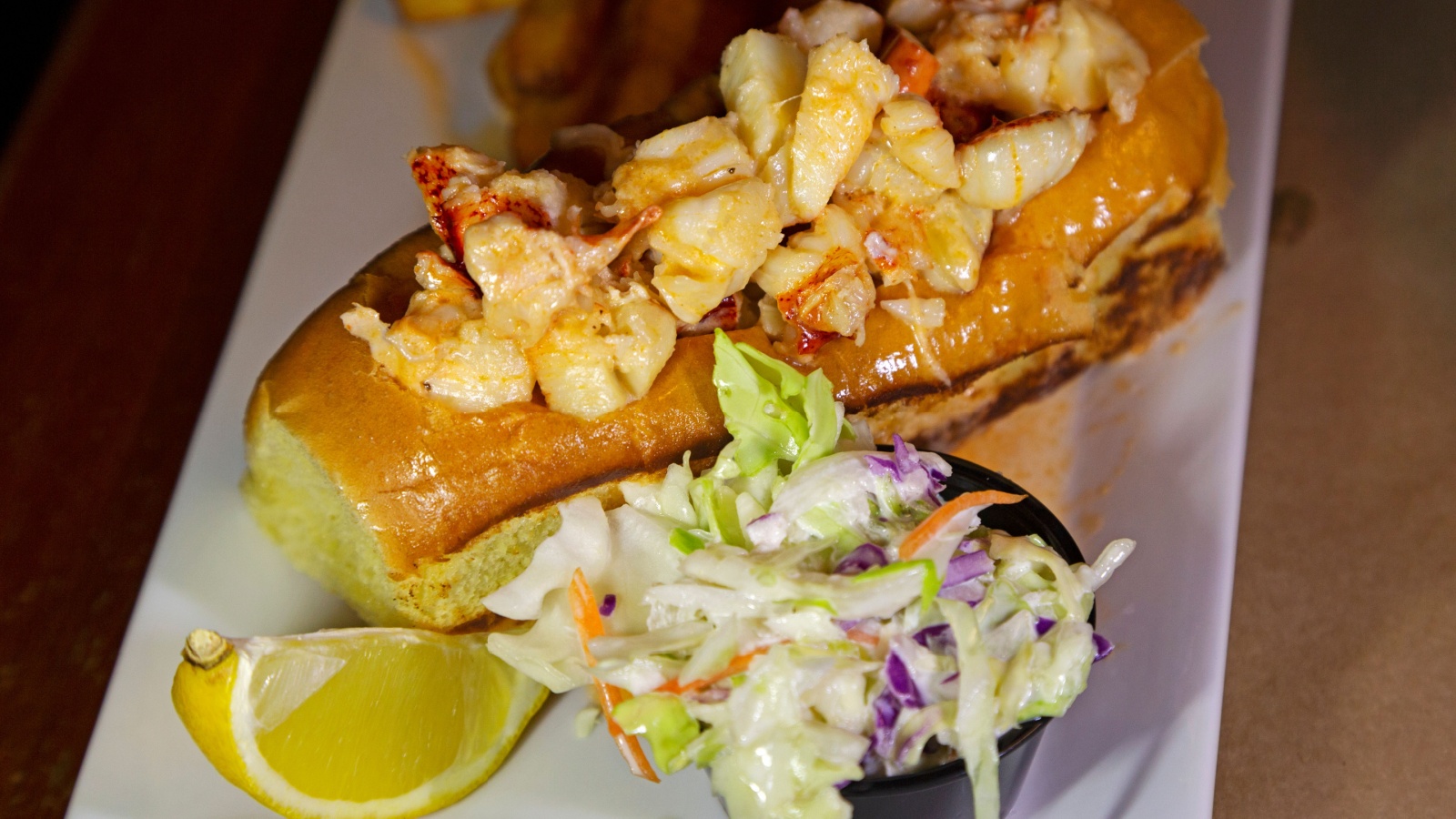
Atlantic lobster rolls, a summertime favorite in Nova Scotia or Prince Edward Island, are far from a bargain. A single sandwich can easily reach $30–$40 at casual seaside eateries. Despite being caught locally, export demand, especially to Asia, keeps domestic prices elevated. Restaurants also add premium margins to cover tourism seasonality. Tourists expecting East Coast simplicity often face sticker shock, wondering how a simple bun and shellfish snack costs as much as a full meal elsewhere. Still, the buttery bread and sweet lobster meat make many fork over the cash anyway.
Butter Tarts
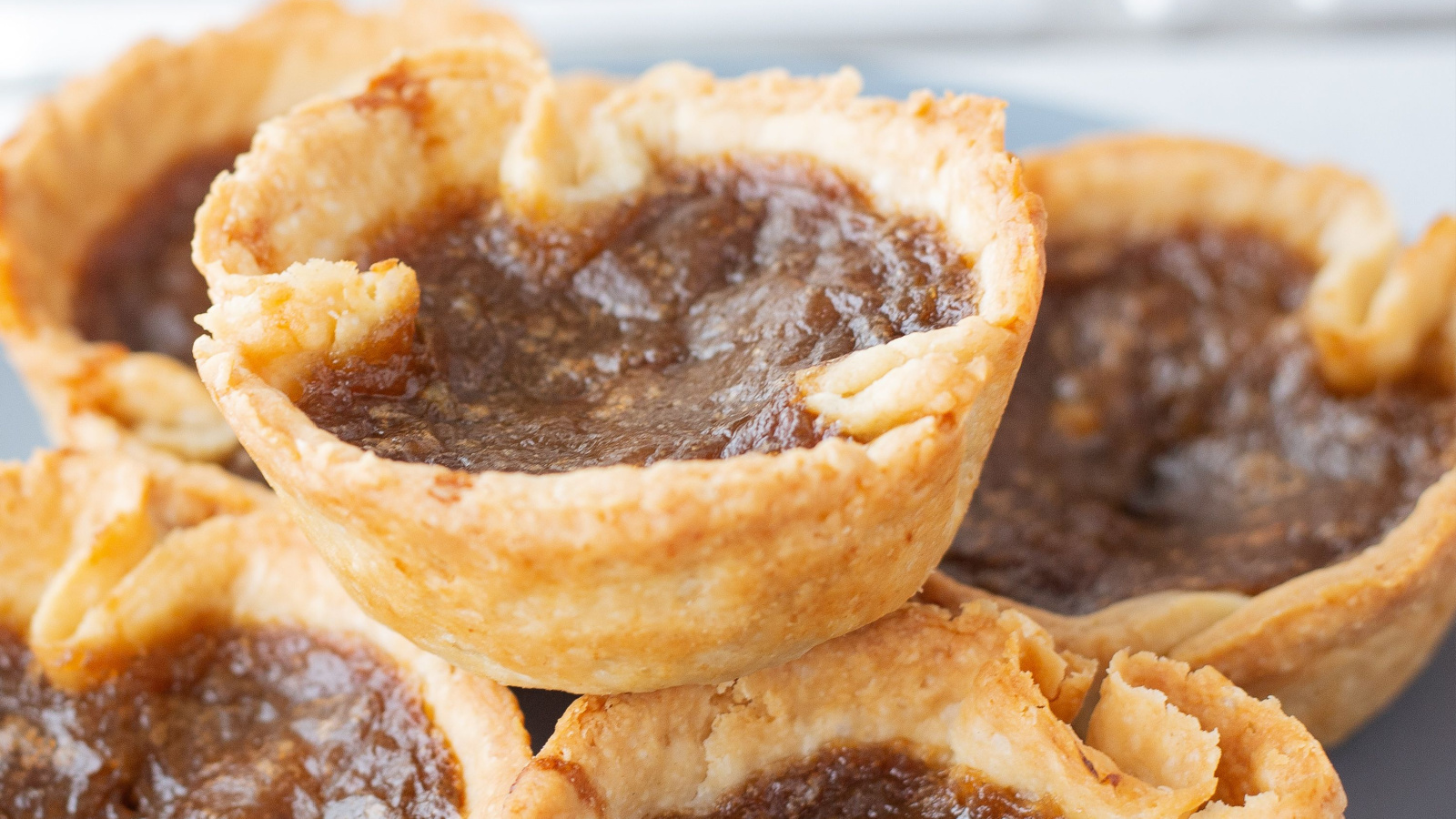
These sweet, gooey pastries are a Canadian dessert staple, but they are rarely cheap for their size. A single butter tart often sells for $4–$6, and artisanal bakeries charge even more for varieties with pecans or maple filling. Rising dairy and butter prices play a huge role, as does the trend of gourmet bakeries marketing “heritage” recipes. Visitors looking for an inexpensive sugar fix quickly realize these nostalgic treats are priced like luxury pastries. The small-town bakery charm hides a cost that adds up fast when buying a box to take home.
Nanaimo Bars
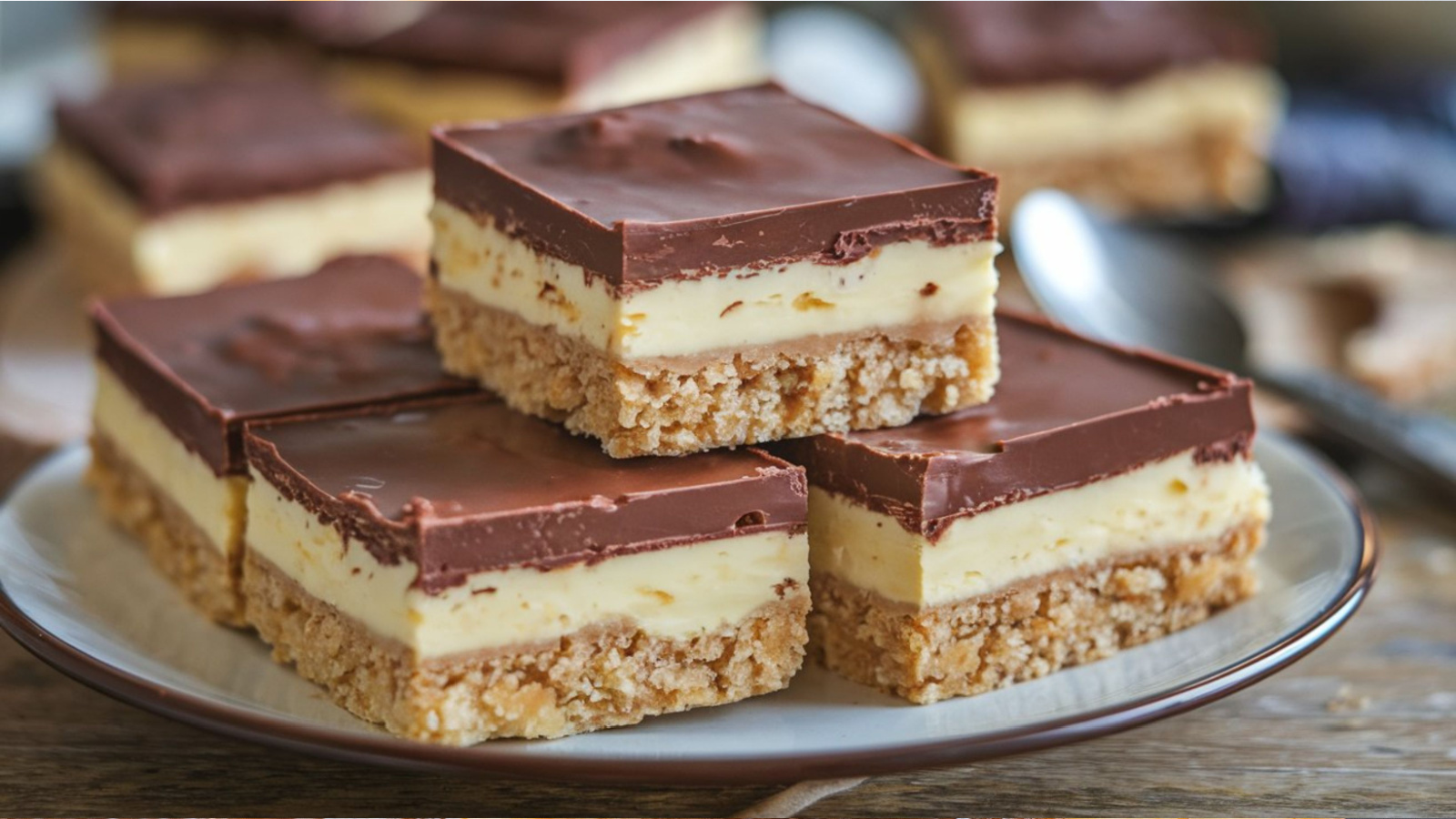
Named after the British Columbia city of Nanaimo, these layered desserts—custard, chocolate, and graham crumbs, seem simple but come with upscale prices. A single square can go for $5–$7 at cafés, especially in tourist-heavy regions. The butter-rich ingredients and premium chocolate used in authentic versions drive up costs, as does packaging for souvenir sales. Many tourists are stunned that a dessert bar could rival the price of a coffee, but the combination of nostalgia and regional pride keeps locals willing to pay. It’s a small indulgence that rarely feels “cheap.”
Salmon
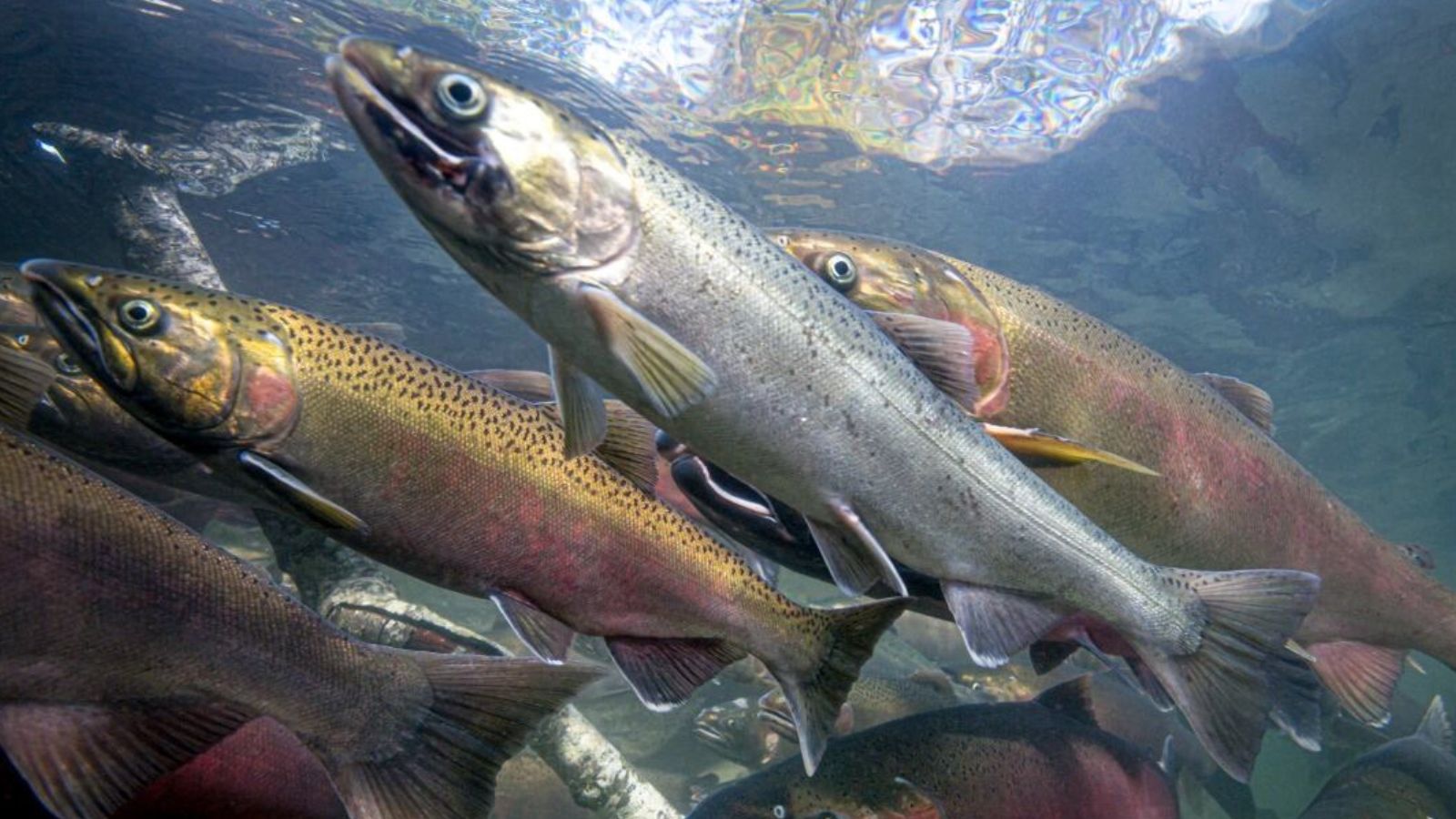
Fresh or smoked, Canadian salmon is considered a premium item—even within its own borders. A pound of wild-caught Pacific salmon can exceed $30, while a single restaurant entrée ranges from $35–$55. Climate change, overfishing, and high export demand to Japan and the U.S. have reduced supply, pushing prices upward. Even grocery-store fillets are costly. Tourists, expecting local seafood to be more affordable, often leave restaurants both full and financially humbled. It’s one of those foods that remind visitors that “local” doesn’t always mean “cheap.”
BeaverTails

The popular fried-dough pastry is a must-try street food, but it rarely feels like one price-wise. A basic BeaverTail costs around $8–$10, while fancy toppings like Nutella, cheesecake, or Skor bits can push it to $12. Considering it’s essentially deep-fried dough, tourists sometimes hesitate. Still, the chain’s iconic branding and limited locations near tourist landmarks justify the cost. Part nostalgia, part marketing, it’s a pricey indulgence that delivers on flavor, just not on budget. A family of four can easily drop $40 on a quick dessert stop.
Peameal Bacon Sandwiches
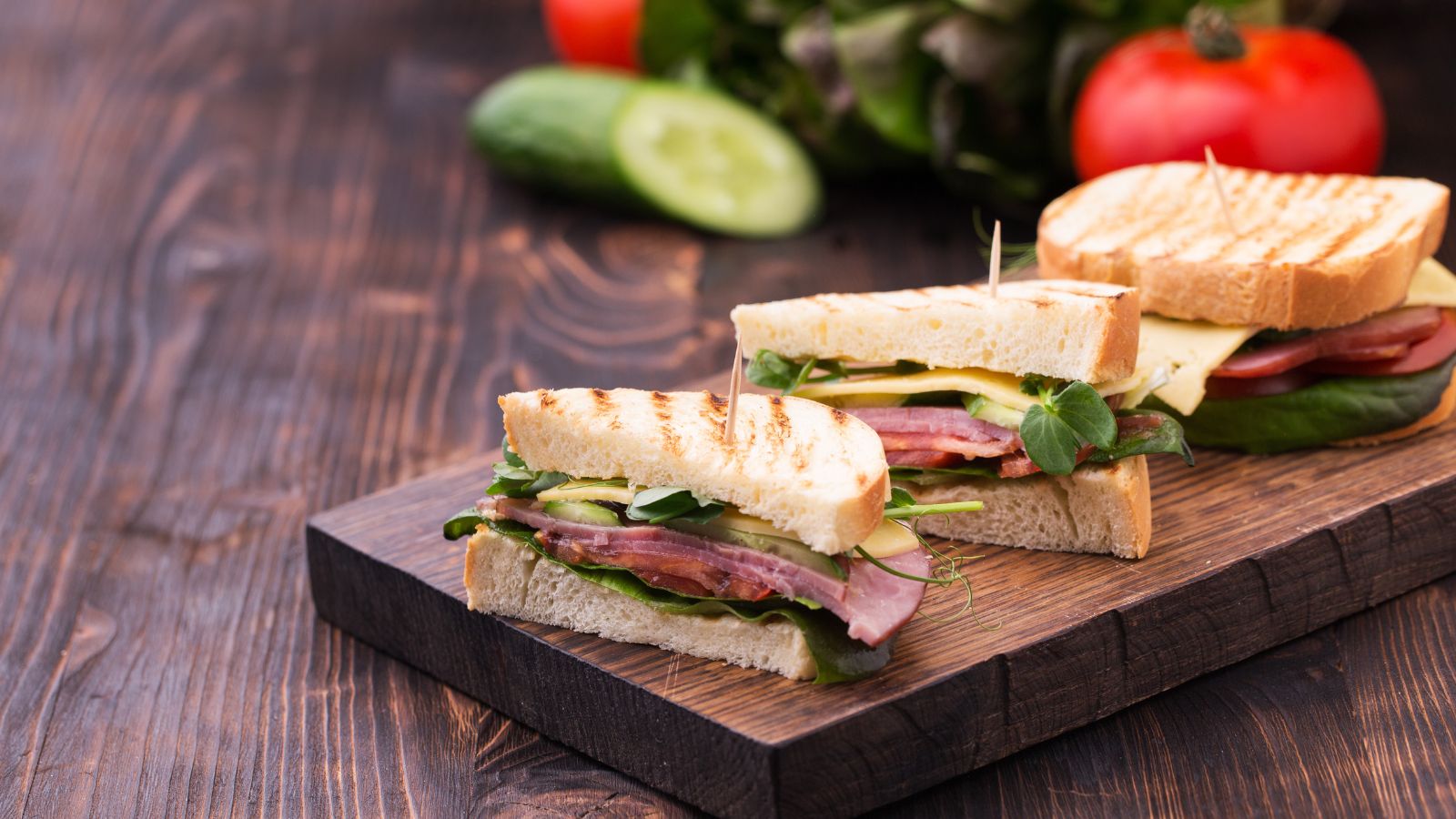
Toronto’s St. Lawrence Market is famous for its peameal bacon sandwiches, but visitors are often stunned to pay $12–$15 for one. The sandwich features thick slices of cornmeal-crusted pork loin on a bun, hardly an expensive ingredient list. But the combination of local pride, market rent, and tourism markups keeps prices high. Even fast-food versions around the city stay above $10. Tourists expecting a cheap breakfast sandwich find out fast that Canadian-style bacon carries an unexpectedly premium price tag in its home city.
Ice Wine

Niagara’s famous ice wine is luxurious, but its price shocks newcomers. A 375 ml bottle (half the usual wine size) costs between $50–$90, and top-tier vintages reach $150 or more. The price comes from the risky, labor-intensive harvest; grapes must freeze naturally on the vine before picking, producing tiny yields. The result is a rich, syrupy dessert wine beloved worldwide but rarely consumed casually. Tourists lured by the name often assume it’s just “sweet wine,” only to realize they’ve bought one of Canada’s most premium exports.
Montreal Bagels
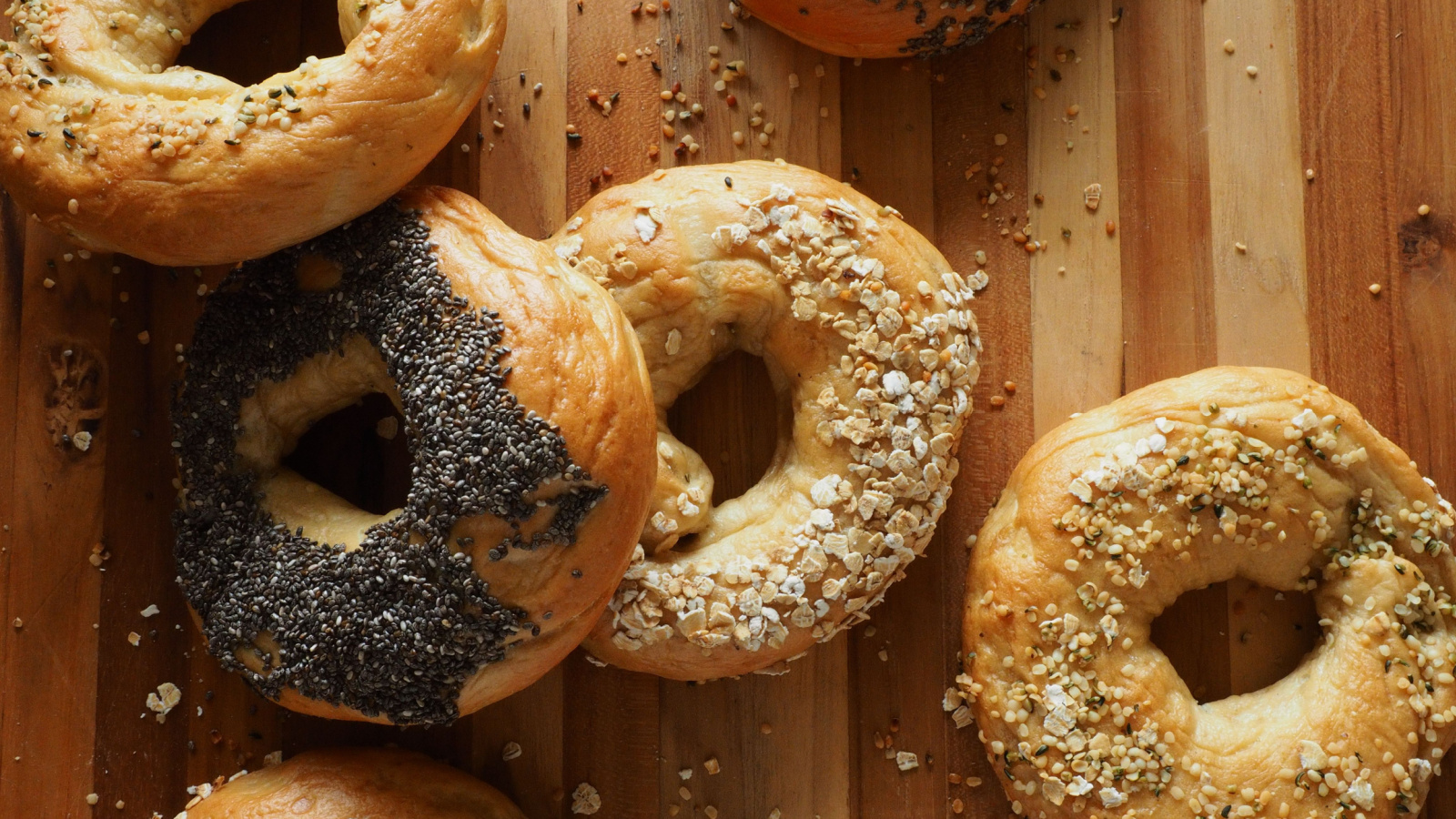
Bagels from Montreal bakeries like St-Viateur or Fairmount are culinary icons, but not exactly cheap by global standards. A single bagel can cost $2.50–$3, and a dozen averages $14–$18. Add cream cheese or smoked salmon, and it becomes a $20 brunch. Tourists accustomed to bulk pricing in U.S. cities are often surprised by the boutique bakery pricing model. The dough is hand-rolled, boiled in honey water, and baked in wood-fired ovens, a tradition that adds both labor and flavor, and apparently, a price premium too.
Tim Hortons Coffee
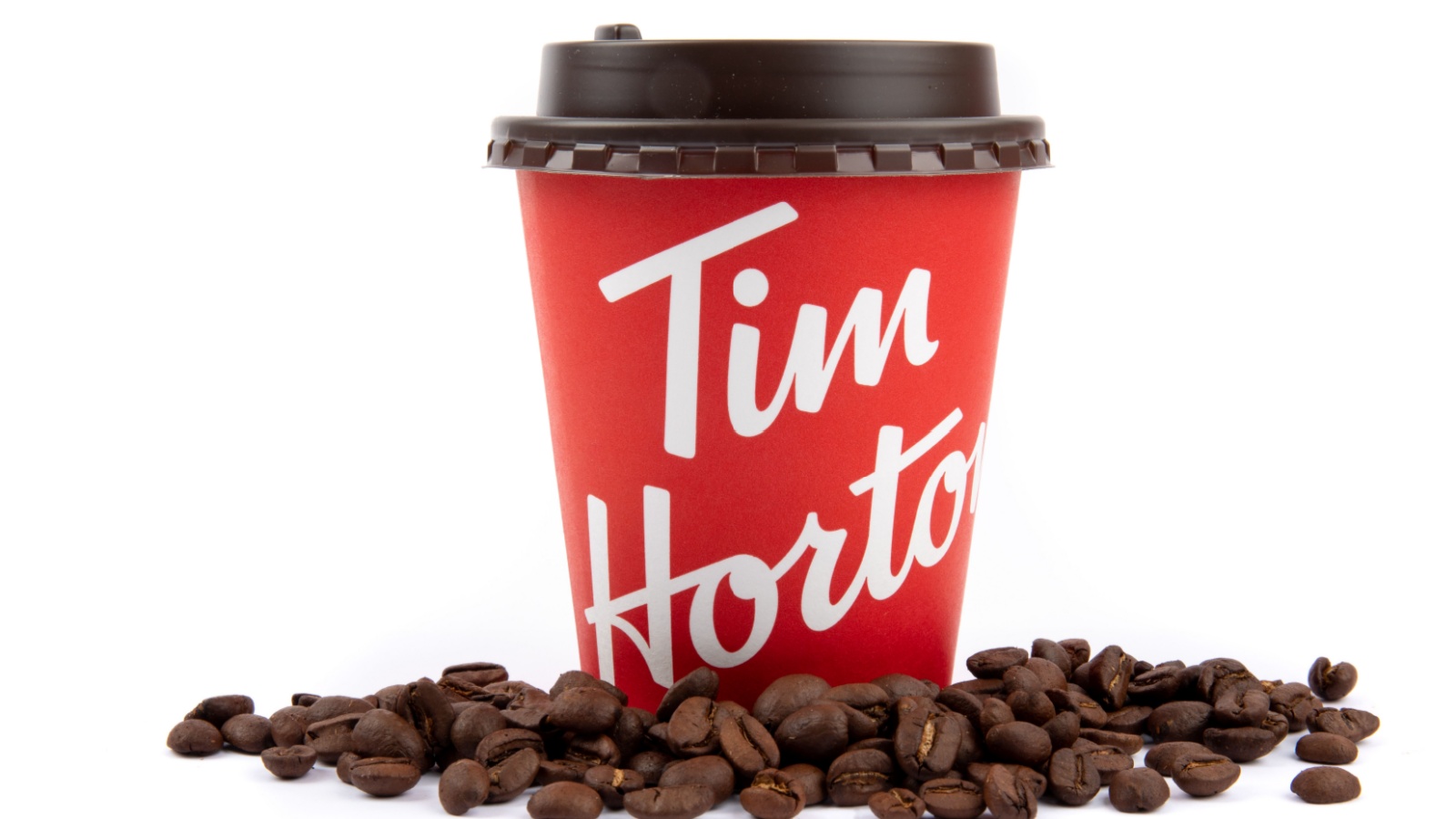
Despite being the country’s go-to for affordable caffeine, even Tim Hortons has crept up in price. A medium coffee now averages $2.75, while specialty drinks like iced cappuccinos and lattes range from $5–$7. Tourists who expect the chain to be “budget-friendly” quickly realize that Canada’s inflation and dairy costs hit even its national treasure. Add breakfast sandwiches and sides, and a simple coffee run can approach $15. The chain’s familiarity hides the fact that it’s no longer the low-cost stop it once was.
Ketchup Chips
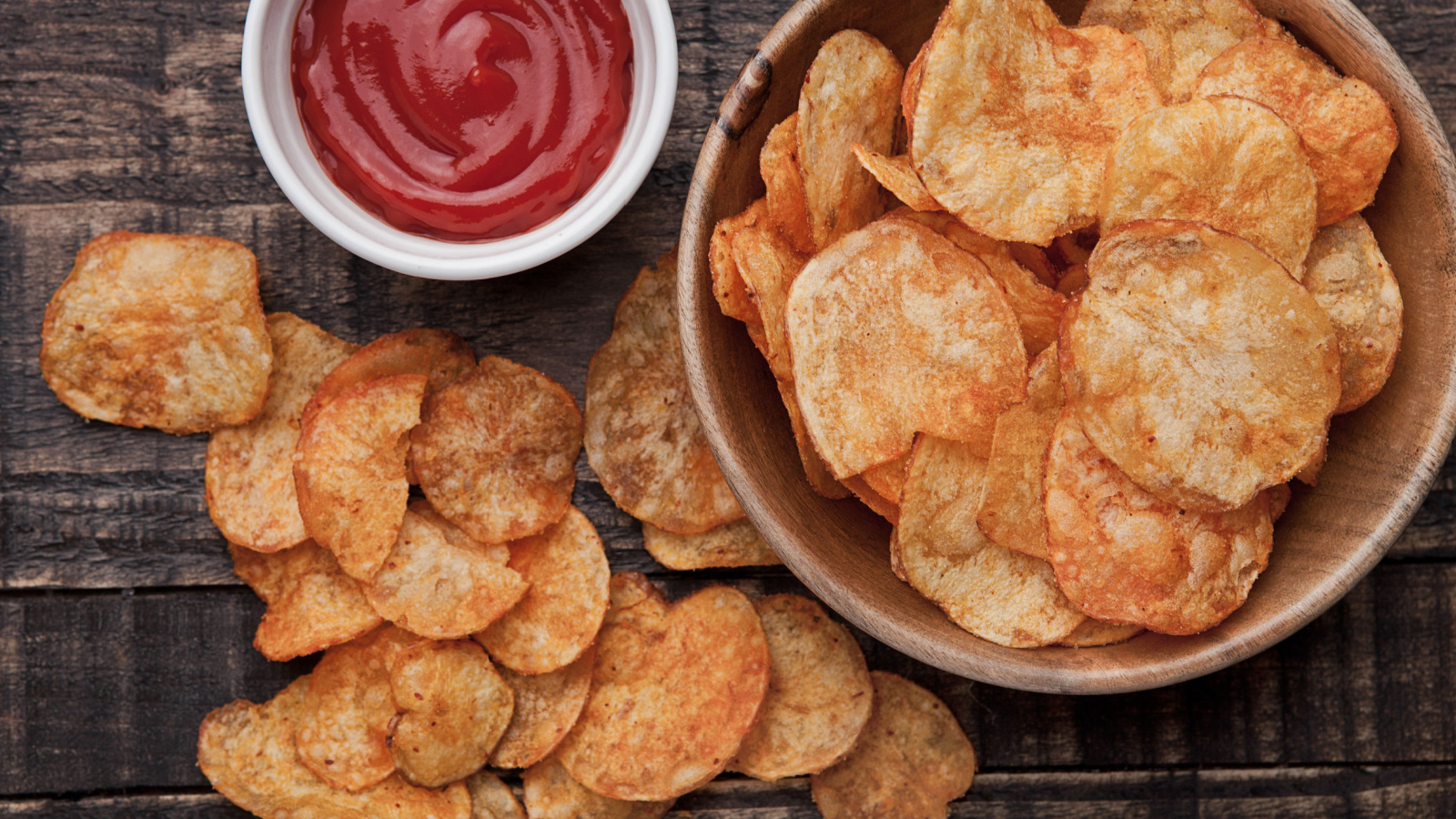
This beloved snack seems like it should be cheap, but its price shocks many visitors. A family-sized bag often costs $5–$6, and smaller single bags can hit $2.50. Specialty versions from brands like Covered Bridge or Miss Vickie’s cost even more. Since they’re a uniquely Canadian flavor, supply and demand remain limited, and tourists often stock up to take them home, further feeding demand. Grocery markups in rural or northern regions make them even pricier, leaving travelers amused that potato chips could feel like souvenirs.
Bannock
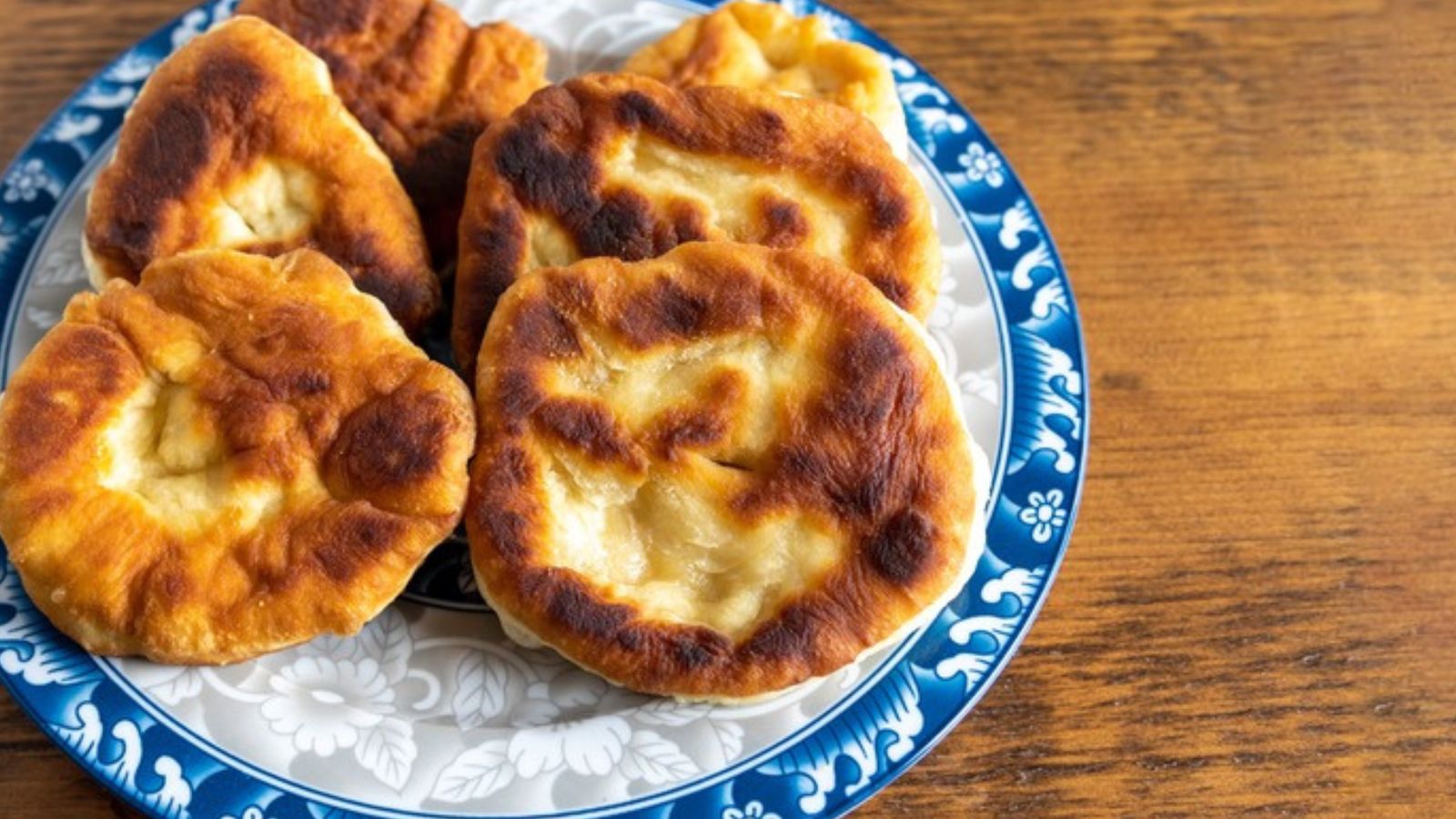
This Indigenous flatbread, once considered a staple food, has been transformed into a cultural delicacy. At restaurants or food festivals, a single serving can run $10–$15, and variations with toppings or fillings cost more. Tourists often expect it to be inexpensive street food, but learn it’s been elevated into a symbol of Indigenous pride and cuisine. Ingredients aren’t costly, but the pricing reflects cultural respect, artisan preparation, and limited availability. It’s less about what’s on the plate and more about the story it carries.
Samosas
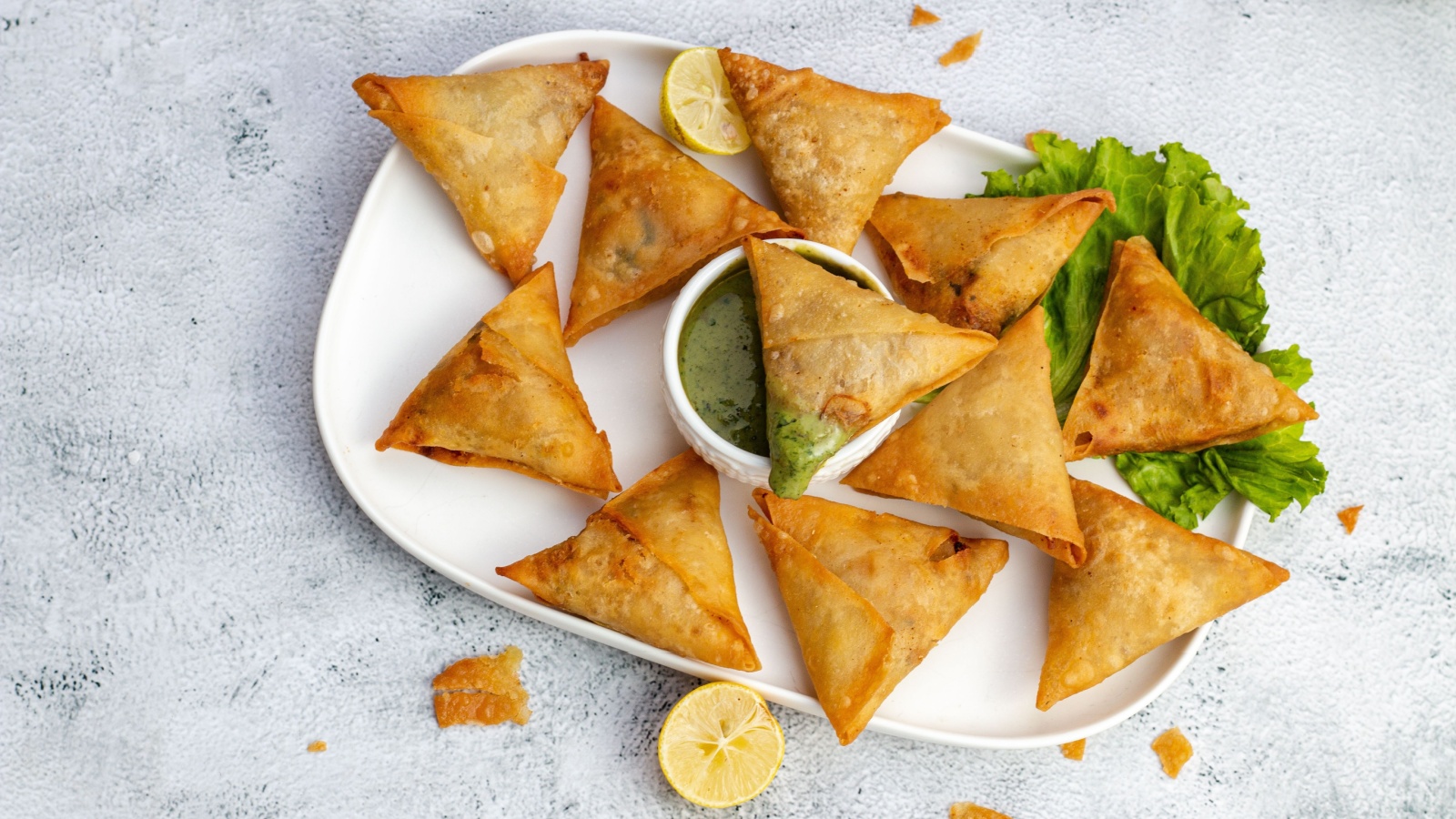
In multicultural hubs like Vancouver and Toronto, samosas are everywhere, but they’re not always the $1 snacks visitors expect. Many bakeries and cafes charge $3–$5 per piece, and gourmet versions filled with butter chicken or lentils can cost more. Rising rent, food delivery app fees, and higher ingredient costs contribute to the price. Tourists often do a double-take, comparing them to cheaper versions in other countries. Despite that, the Canadian versions are often larger, fresher, and come with a variety of chutneys, so the value depends on perspective.
Caesar Cocktail
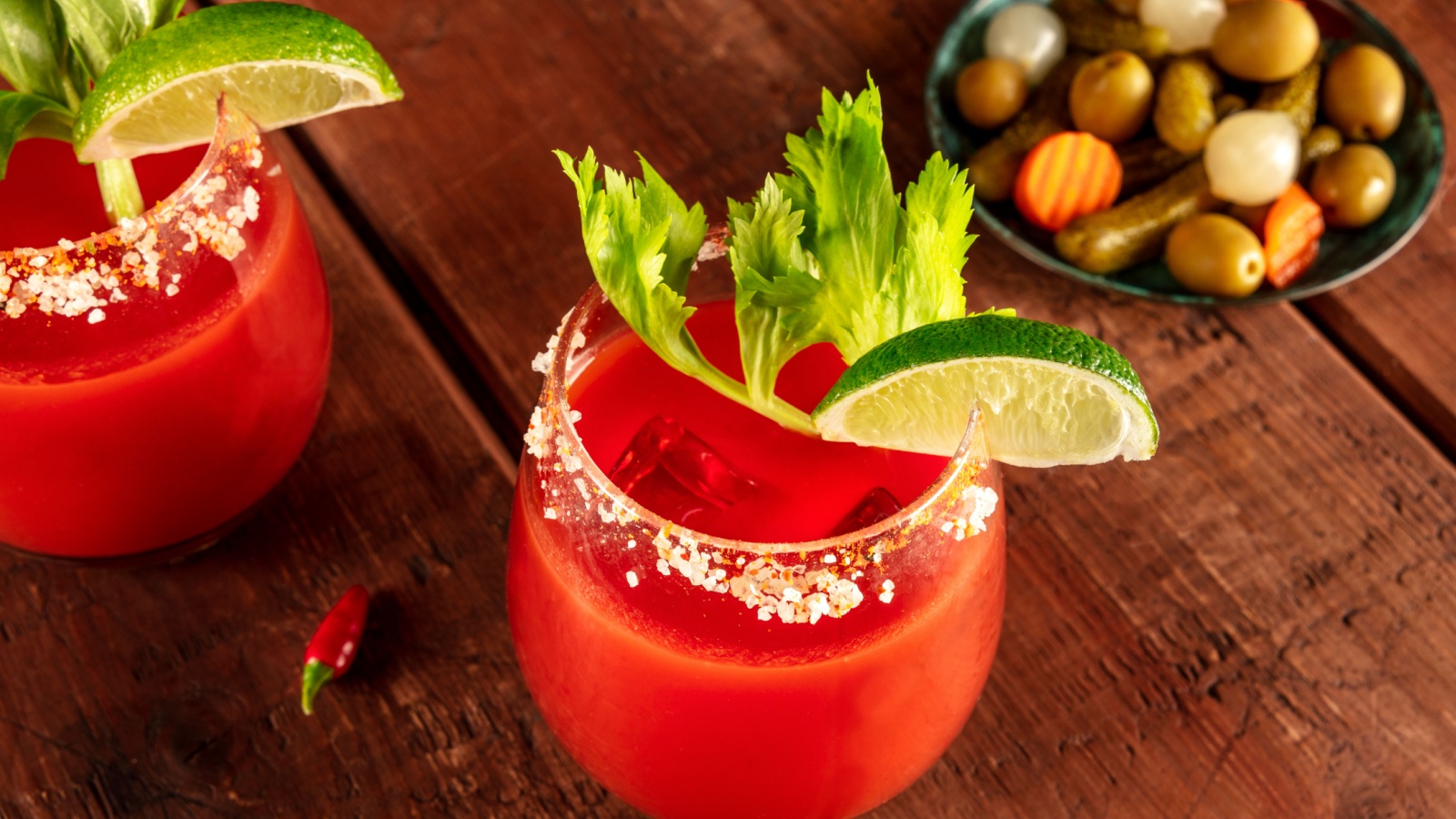
Canada’s national cocktail, the Caesar, can set a tourist back $15–$20 at a bar. Made with vodka, Clamato juice, Worcestershire, and hot sauce, it’s often garnished with extravagant toppings like shrimp or bacon. The price climbs further during brunch hours or in upscale venues. Visitors assume it’s similar to a Bloody Mary until the bill arrives. The cost comes from garnishes and branding, the Caesar is a full meal in a glass, and bars know tourists will pay to experience the “authentic” version at least once.
Cheese Curds
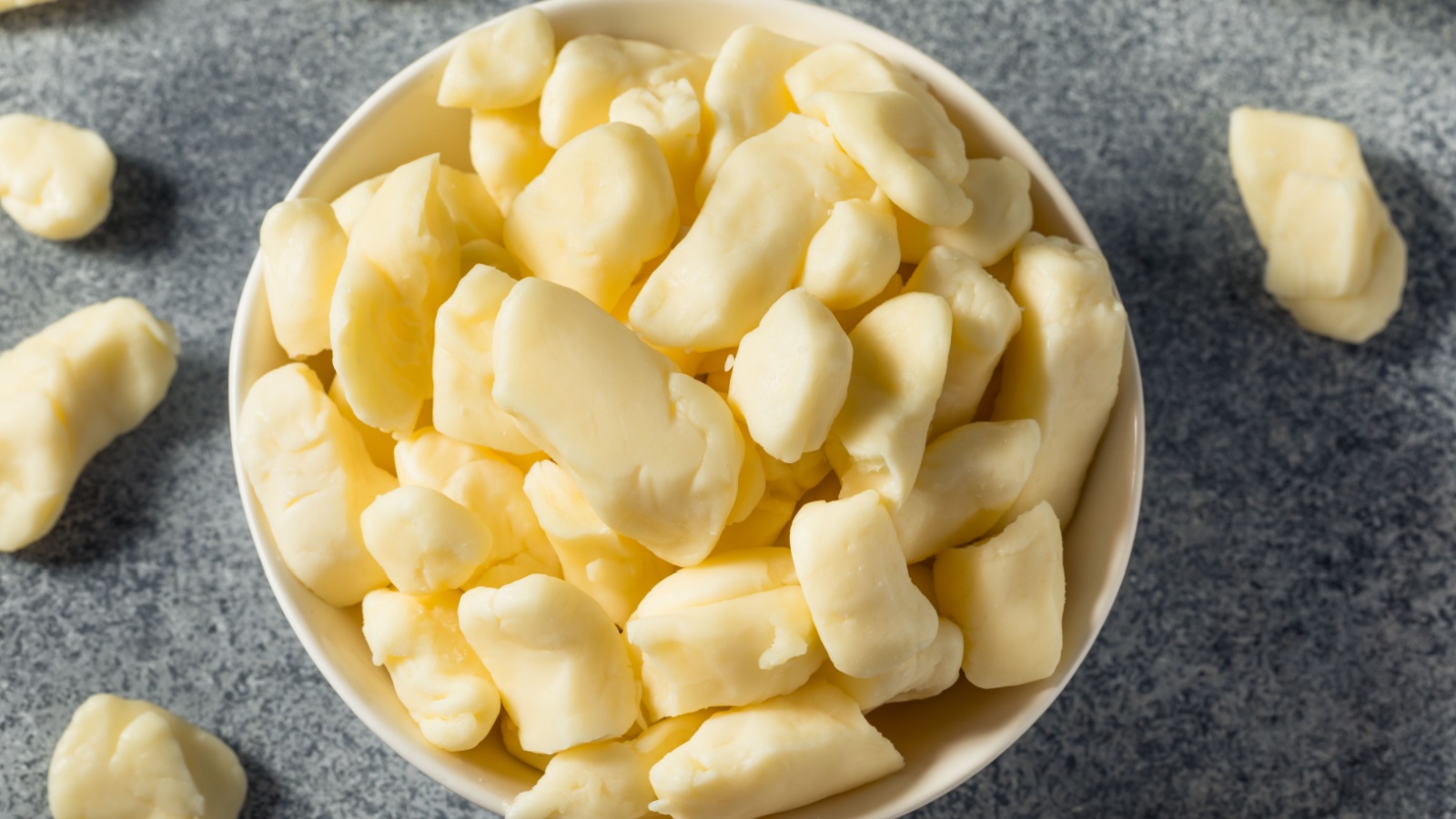
Essential for poutine and beloved on their own, cheese curds aren’t cheap. A small bag can cost $10–$14 at farmers’ markets, largely due to dairy production limits and regional availability. Tourists expecting snack-level prices find out they’re more like gourmet cheese portions. Shipping costs from Quebec or Ontario to other provinces also drive up the price. While locals see it as normal, travelers are stunned that a handful of squeaky cheese costs as much as a restaurant appetizer.
Bison Burgers
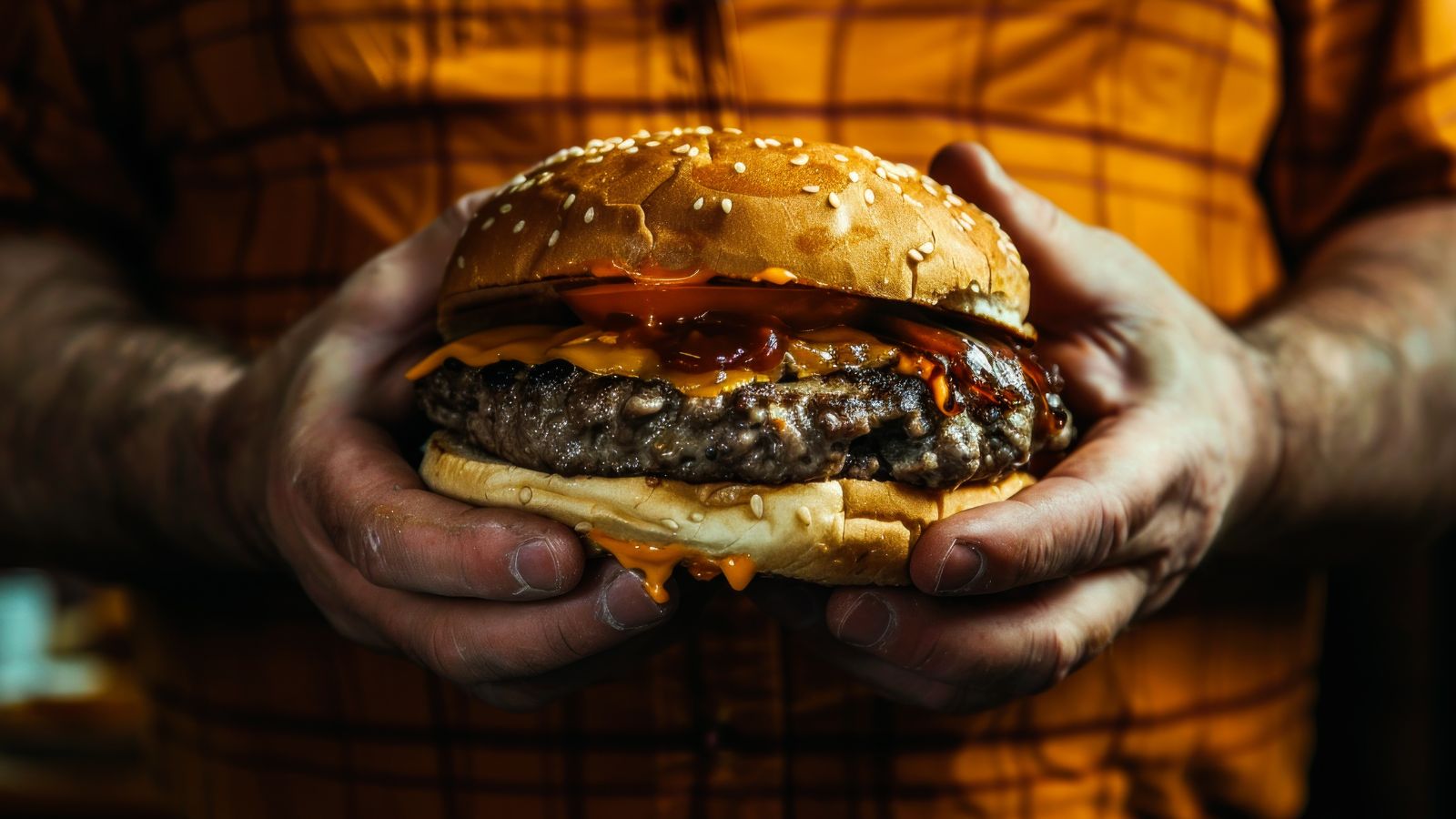
Bison meat is lean and flavorful but costs nearly twice as much as beef. A bison burger at restaurants can range from $22–$35. The high price stems from smaller herds, higher feed costs, and sustainable farming methods. Tourists intrigued by the “Canadian wild” theme often splurge once and then hesitate to repeat. Despite the price, bison remains popular for its protein-rich profile and ethical sourcing. For many visitors, it’s an expensive taste of the country’s rugged heritage.
Montreal Smoked Meat
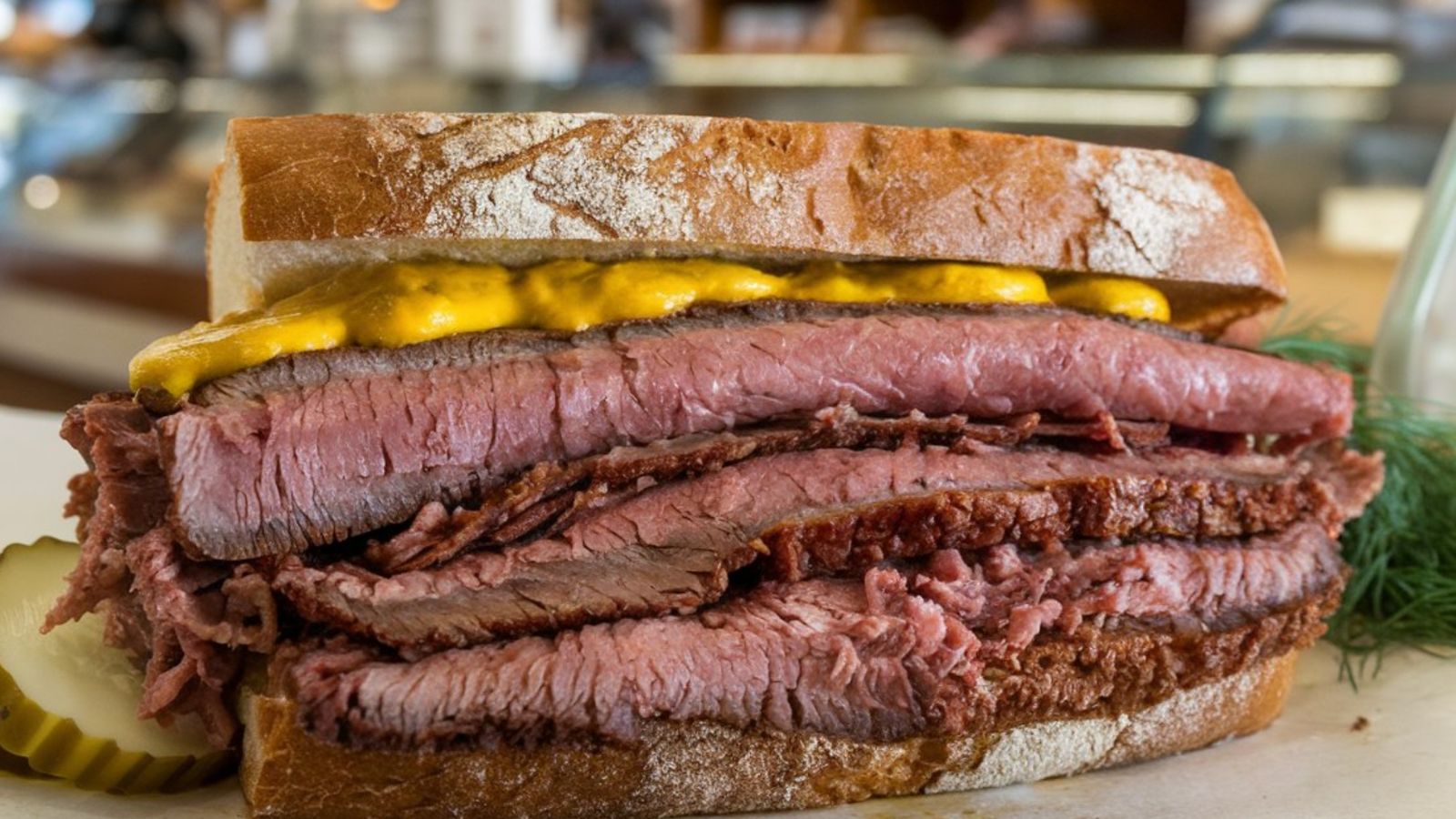
The thick, juicy sandwiches from Montreal delis like Schwartz’s are legendary—but they’re not cheap eats anymore. A standard smoked meat sandwich costs $15–$20, and combo plates can reach $30. Tourists expecting old-school deli prices are surprised to see gourmet-level charges. The labor-intensive smoking process, brisket prices, and tourist demand drive the cost. Even takeaway lines show how a once-humble dish became a pricey icon. Few complain after tasting it, but everyone notices the dent in their wallet.
Fish and Chips
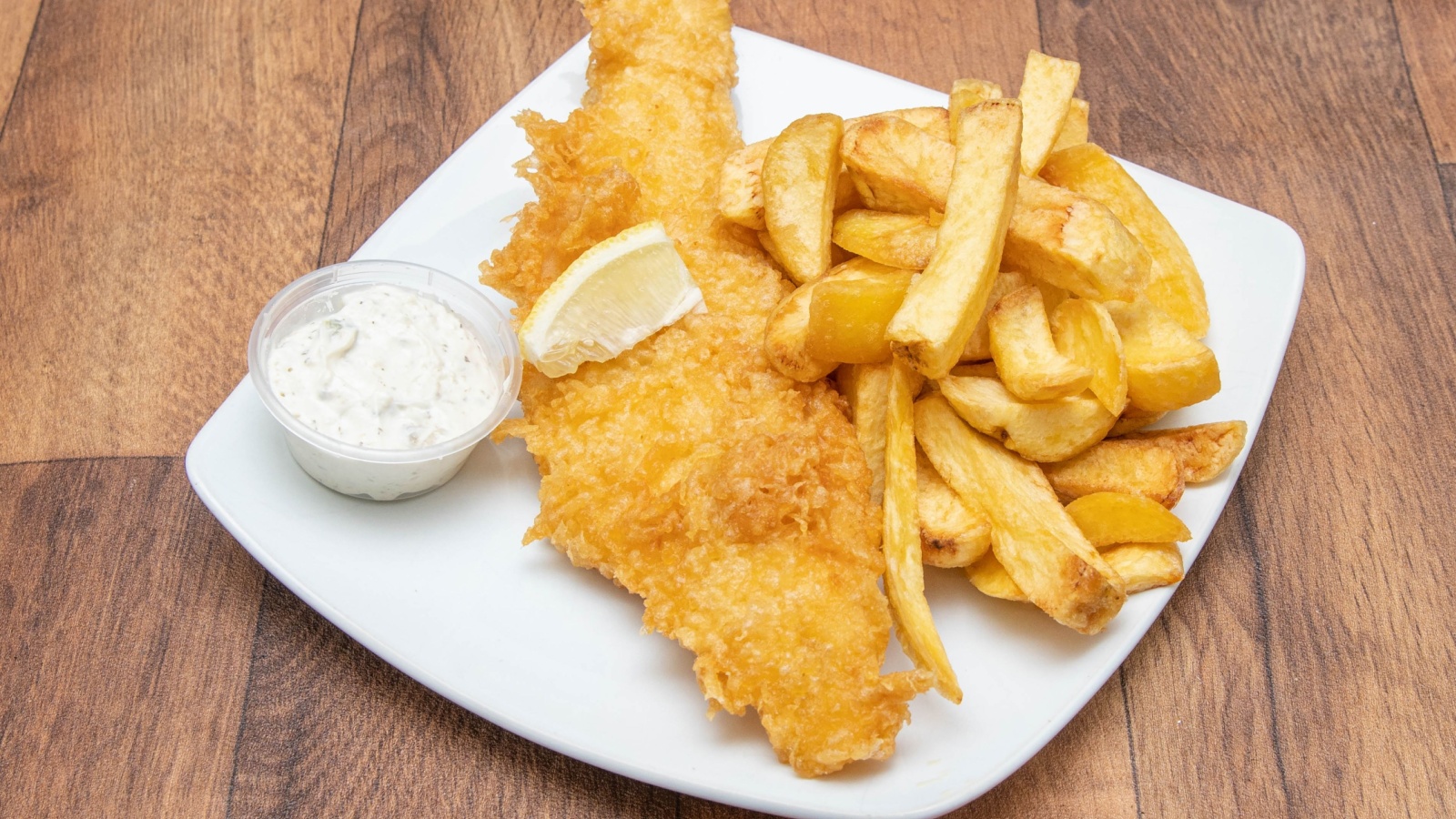
In coastal provinces, fish and chips should be simple fare, yet prices tell another story. A plate often costs $18–$25, even at casual seaside restaurants. The expense comes from fresh-caught fish, cooking oil prices, and short tourism seasons. Tourists from the U.K. or Australia are particularly stunned, comparing it to cheaper seaside versions back home. It’s tasty and filling, but few expect such a basic meal to carry a restaurant-style price tag almost everywhere in the country.
Ribs
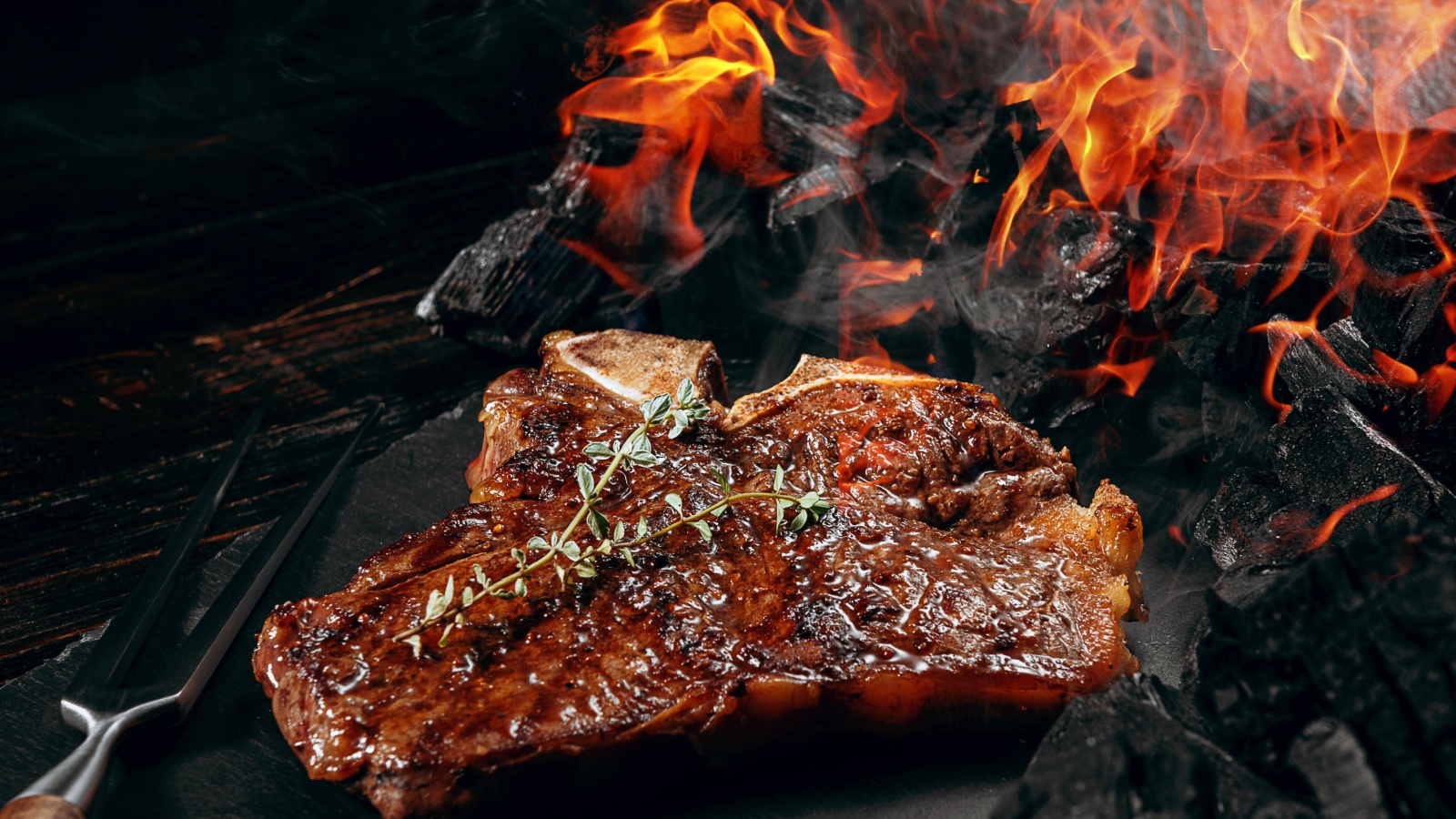
Barbecue fans are often caught off guard by the price of ribs across Canada. A half-rack averages $28–$35, and a full rack can exceed $50 at smokehouses. Pork prices, long cooking times, and restaurant energy costs make it expensive. Tourists hoping for hearty portions at low cost find themselves paying steak prices for ribs. Still, slow-smoked ribs are a comfort food luxury, and many accept the cost once they taste the fall-off-the-bone tenderness that justifies every dollar.
Sushi
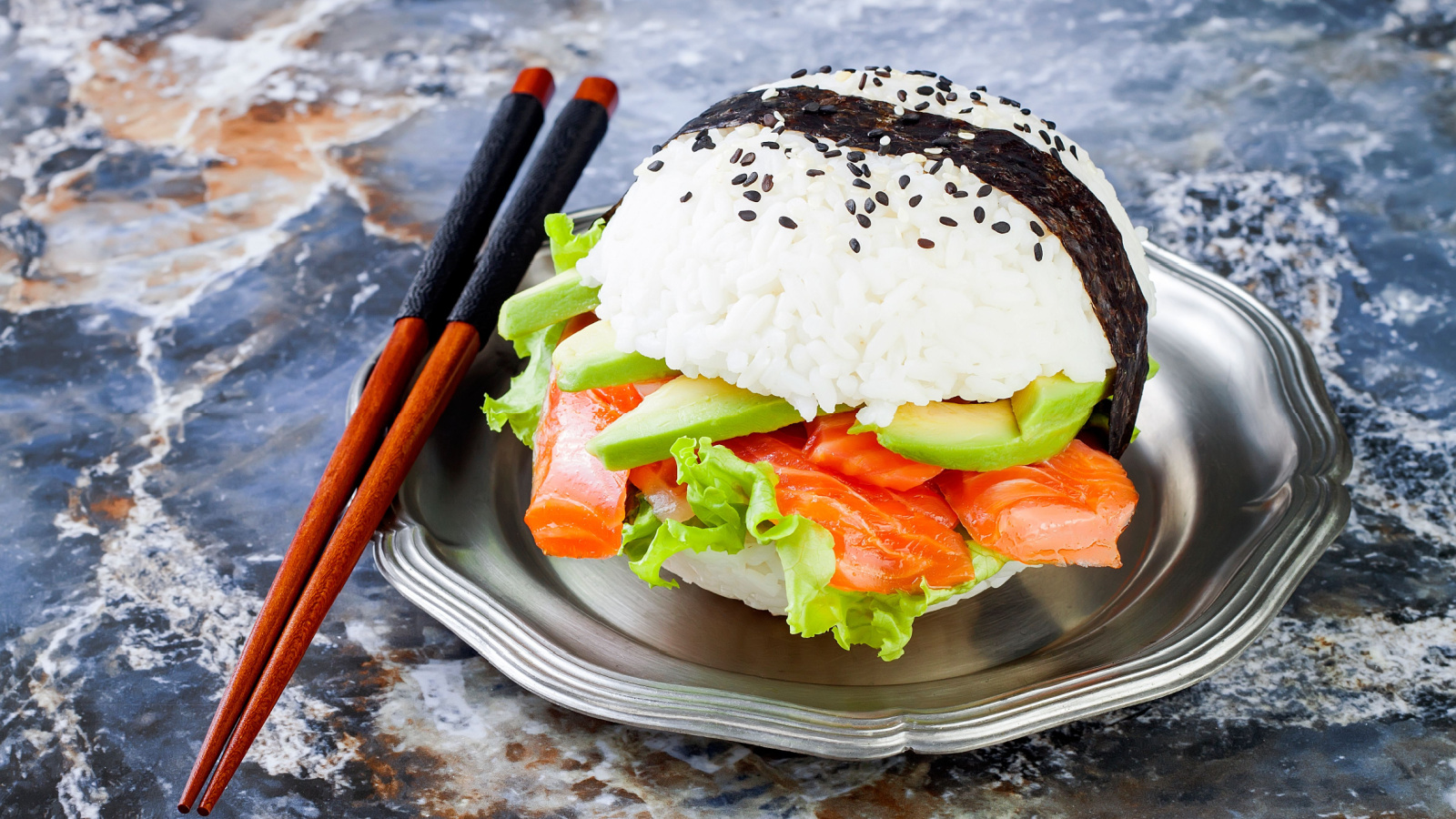
Major cities like Vancouver and Toronto boast incredible sushi, but even basic rolls come at a cost. A lunch combo can range from $20–$30, and omakase experiences exceed $100. Import costs for fresh fish, labor, and rent keep prices high. Tourists often assume sushi would be cheaper near the coast, but quickly learn that quality and freshness command a premium. While the flavor impresses, many diners walk away realizing sushi in Canada is less of a snack and more of an event.
Oysters
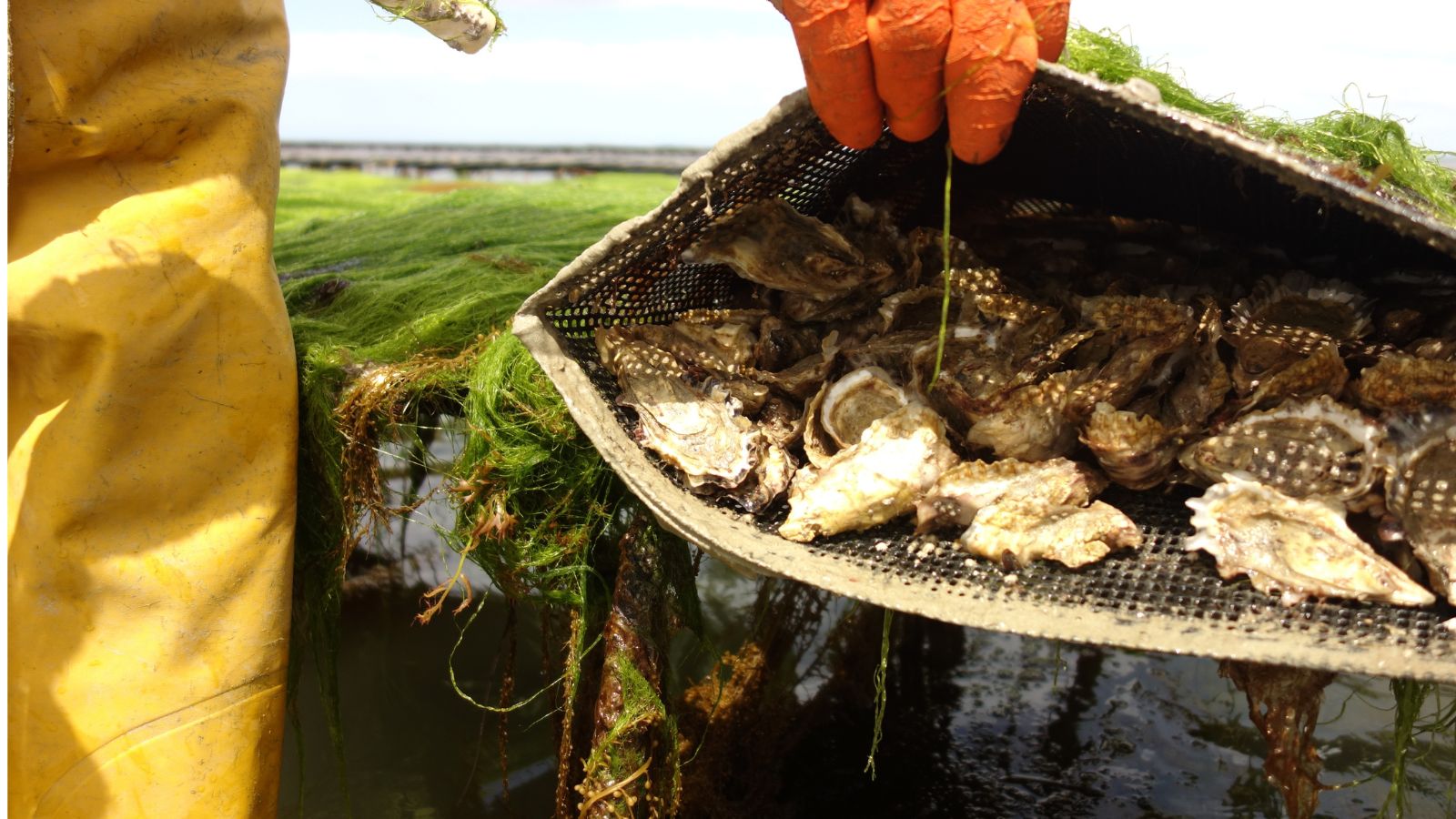
Fresh oysters from Prince Edward Island or British Columbia are world-renowned—and priced accordingly. Restaurants charge $3–$5 per oyster, often with minimum orders of six or twelve. Add sauces, service, and taxes, and you’re looking at $40–$60 for an appetizer. Tourists expecting a coastal deal learn that careful harvesting, limited supply, and high demand keep prices elevated. Despite the sting, the experience of slurping fresh oysters on the coast remains one of Canada’s most memorable (and expensive) food moments.
Craft Beer
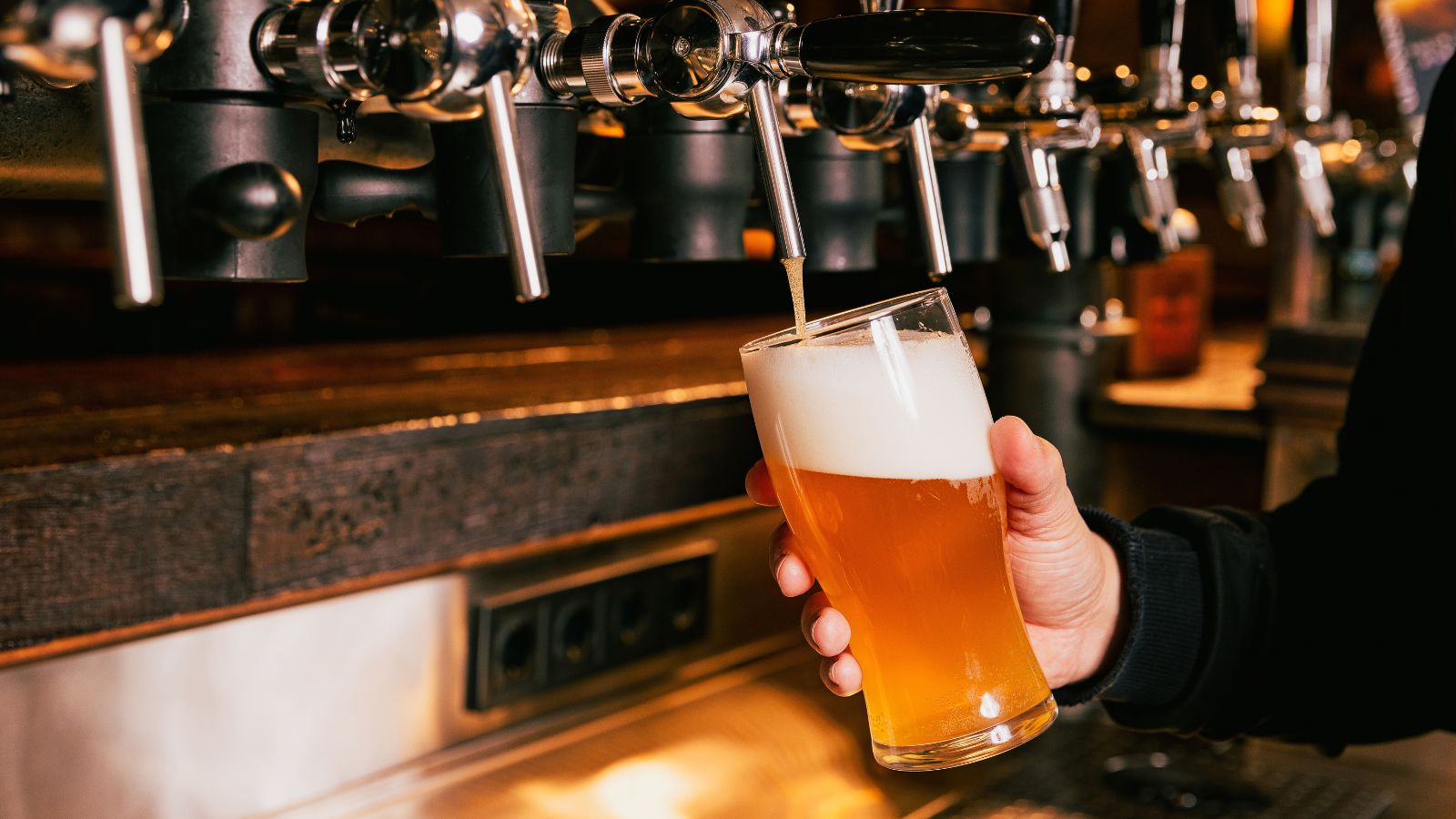
Canada’s craft beer scene has exploded, but so have prices. A single pint at a microbrewery costs $10–$12, and tasting flights can reach $20. Taxes, small-batch production, and high ingredient costs contribute to the expense. Tourists used to cheap domestic beer find the jump surprising, especially in cities where alcohol taxes are steep. Still, many pay up to try region-specific brews like BC’s hazy IPAs or Quebec’s Trappist-style ales. It’s a costly, but distinctly Canadian, way to toast the trip.
21 Products Canadians Should Stockpile Before Tariffs Hit

If trade tensions escalate between Canada and the U.S., everyday essentials can suddenly disappear or skyrocket in price. Products like pantry basics and tech must-haves that depend on are deeply tied to cross-border supply chains and are likely to face various kinds of disruptions
21 Products Canadians Should Stockpile Before Tariffs Hit
